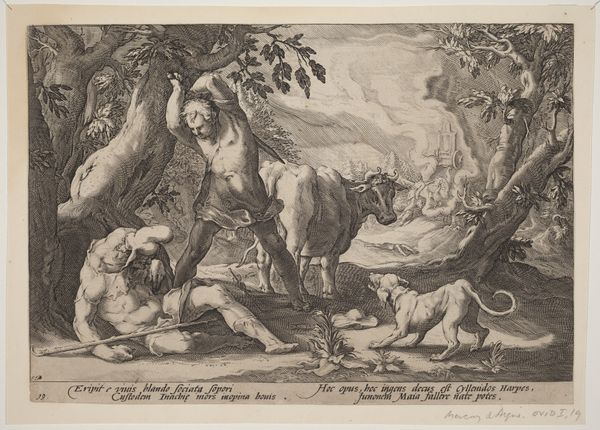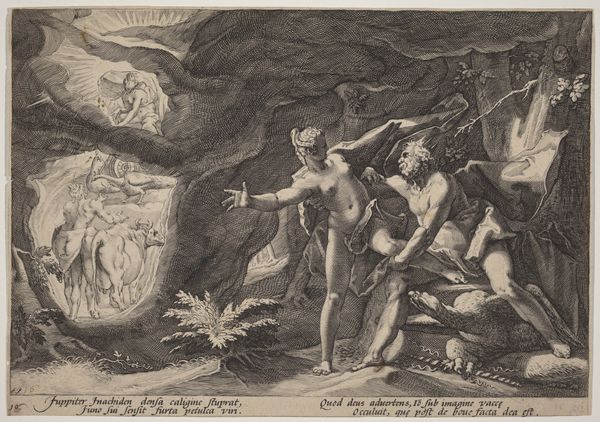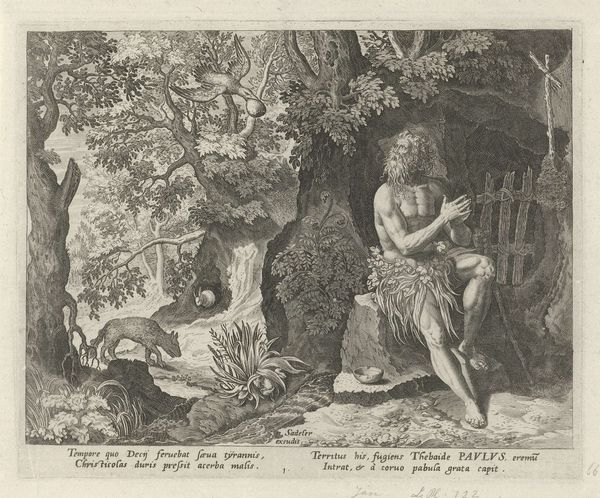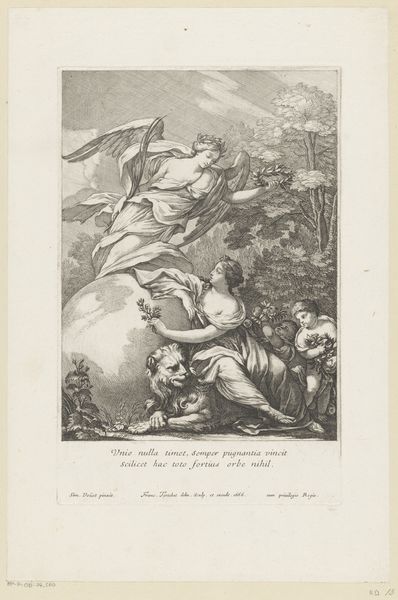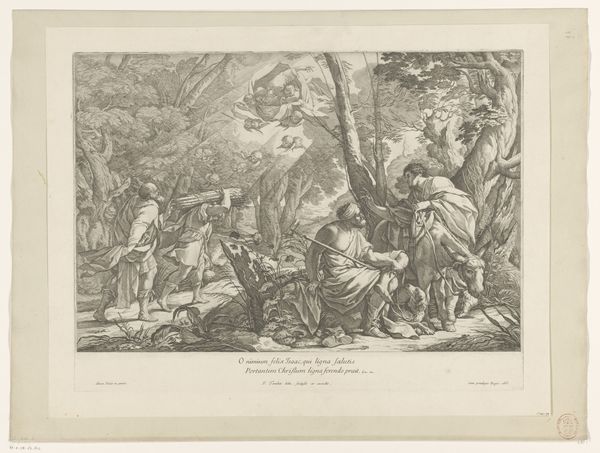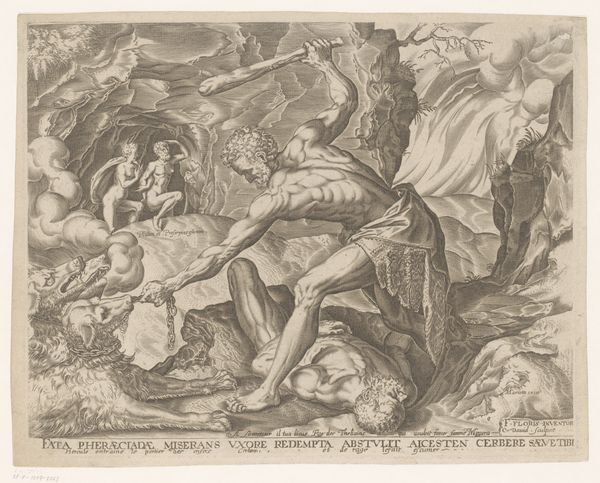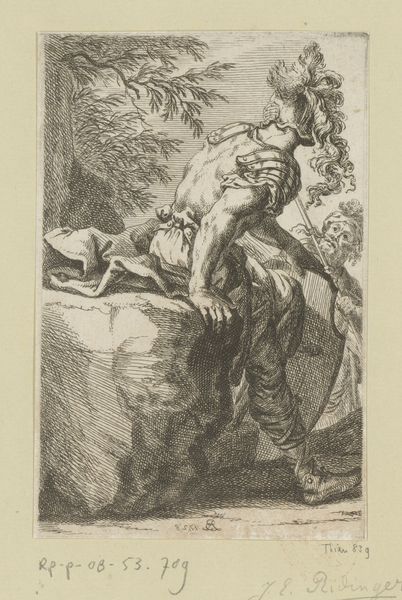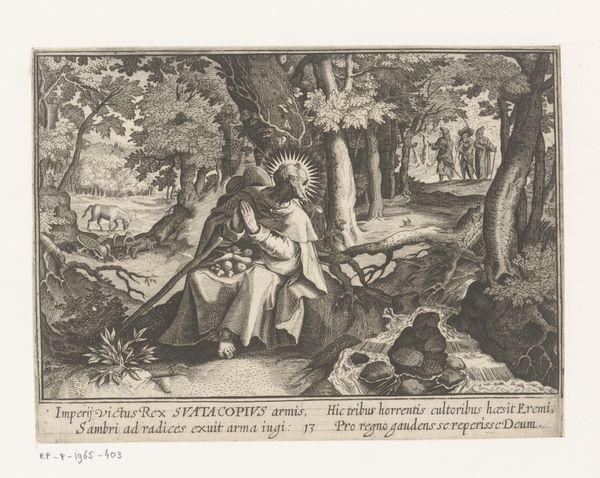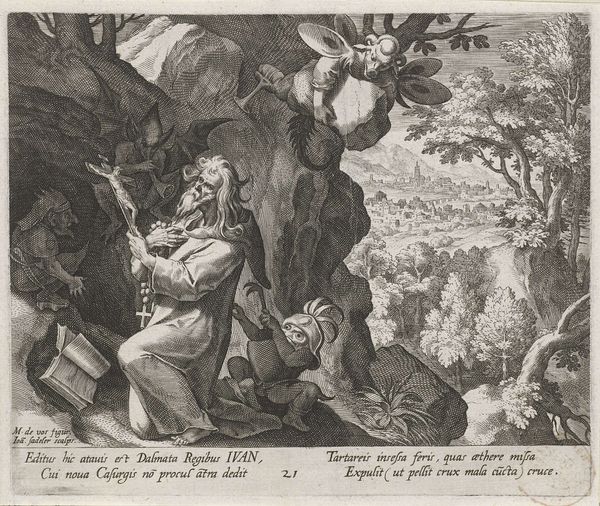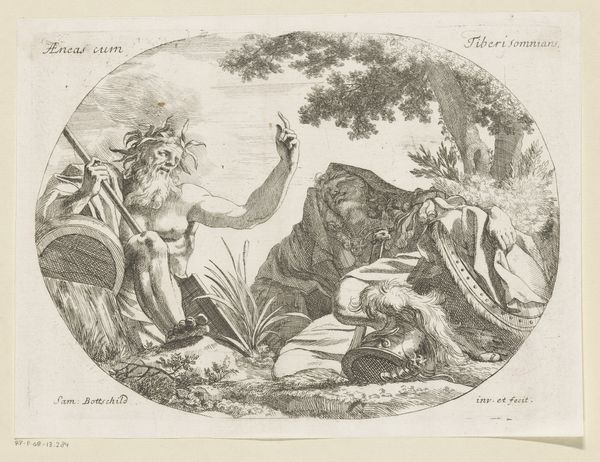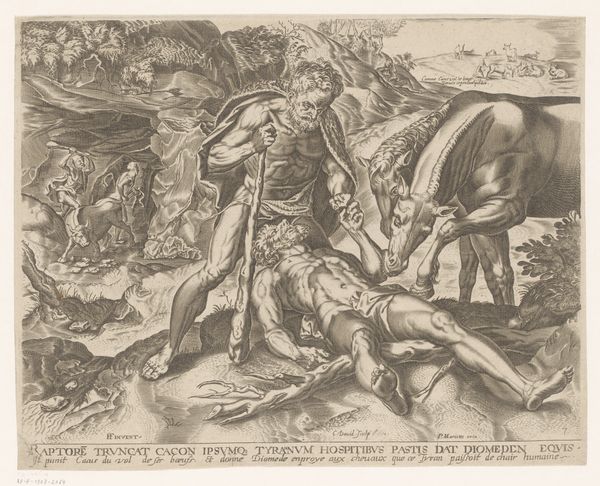
print, etching, engraving
#
baroque
# print
#
etching
#
history-painting
#
engraving
Dimensions: height 145 mm, width 184 mm
Copyright: Rijks Museum: Open Domain
Editor: So, this print is called "Heilige Johannes van Bohemen als kluizenaar," which translates to "Saint John of Bohemia as a Hermit," created after 1594 by Charles van Boeckel. It's an etching and engraving, quite detailed. I’m struck by how the landscape seems almost as important as the figure of the Saint himself. What do you see in this piece? Curator: I am intrigued by how the artist uses the medium of printmaking, typically considered a reproductive technique, to represent themes of spiritual labour and societal power dynamics. Note the evident labor in producing such a detailed print; consider the historical context: prints like this were often commissioned by religious institutions to disseminate particular ideologies, in this case possibly promoting the virtues of piety and withdrawal from worldly concerns, to various consumers. Does the rendering of material create another form of spiritual significance? Editor: That's fascinating. So the very act of creating the print, with its detailed labor, reinforces the message of hard work and devotion depicted in the image itself? And the existence of multiple copies meant a wider distribution of the patron's goals? Curator: Precisely. Think also about the socio-economic context: printmaking provided employment, and the availability of images through print altered visual culture significantly. By analyzing the materiality, labor, and social function of this print, we move beyond a simple art historical study and enter a broader conversation about early modern cultural production. What would it mean for that religious zeal to be commodified into the engraving medium? Editor: That makes me look at the image very differently. I was initially focused on the story it told, but now I’m seeing it as part of a larger system of production and belief. Curator: Indeed. It pushes us to reconsider the hierarchical distinction between "art" and "craft", showing them both engaged in complex material practices intertwined with ideological agendas and, ultimately, religious economies. Editor: I hadn't considered the layers of meaning embedded in the material itself. Thanks, it gave me a new perspective!
Comments
No comments
Be the first to comment and join the conversation on the ultimate creative platform.

